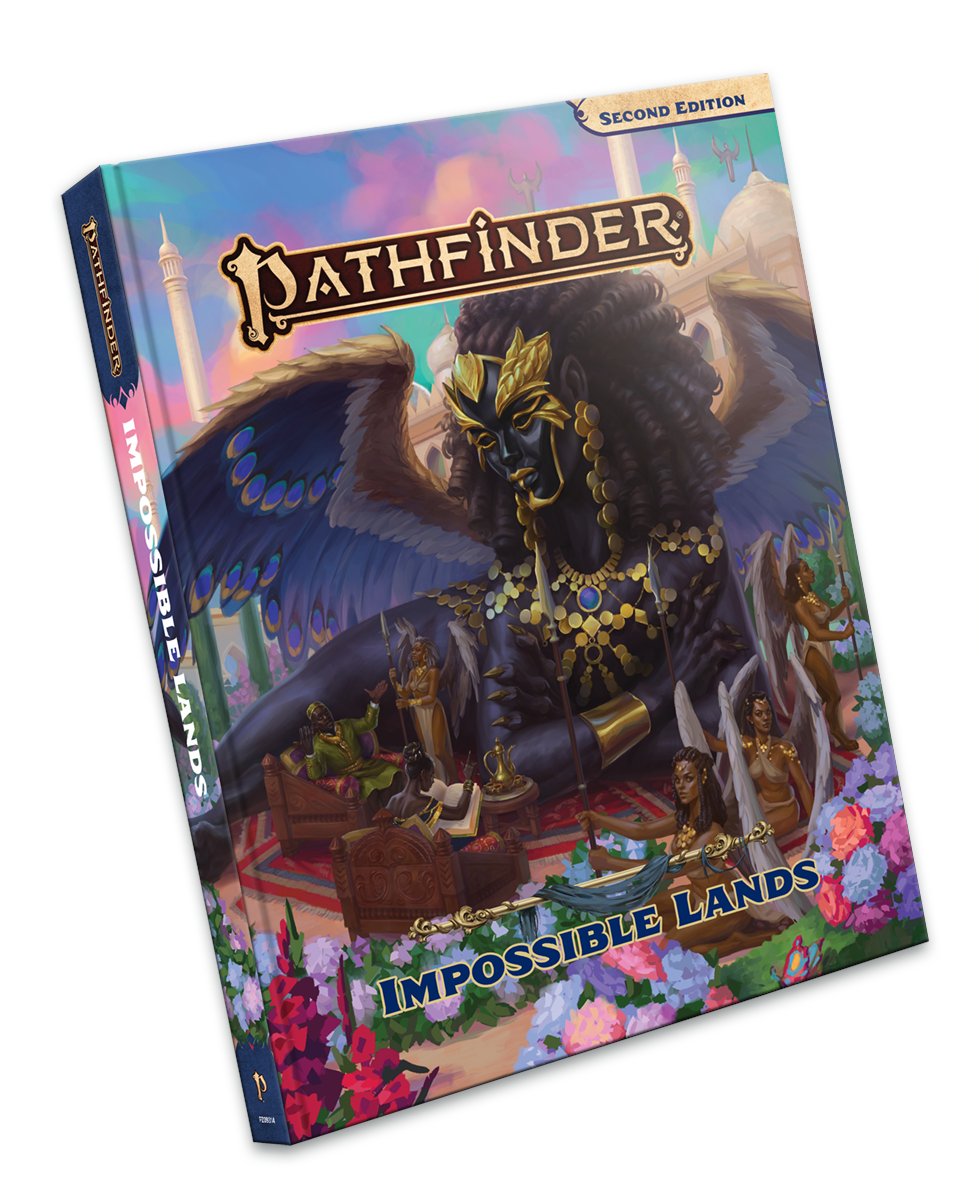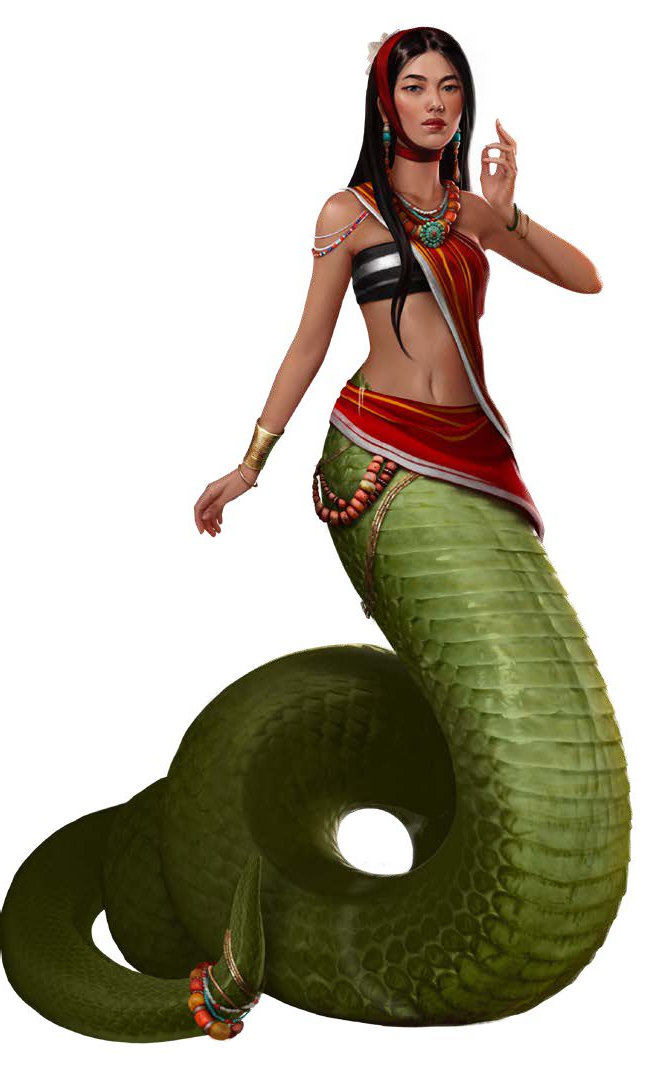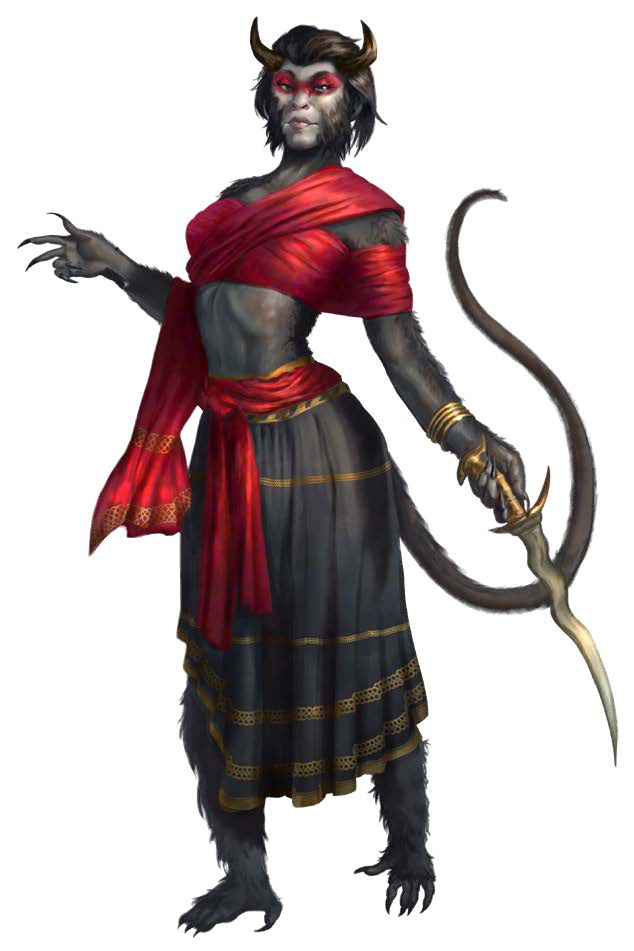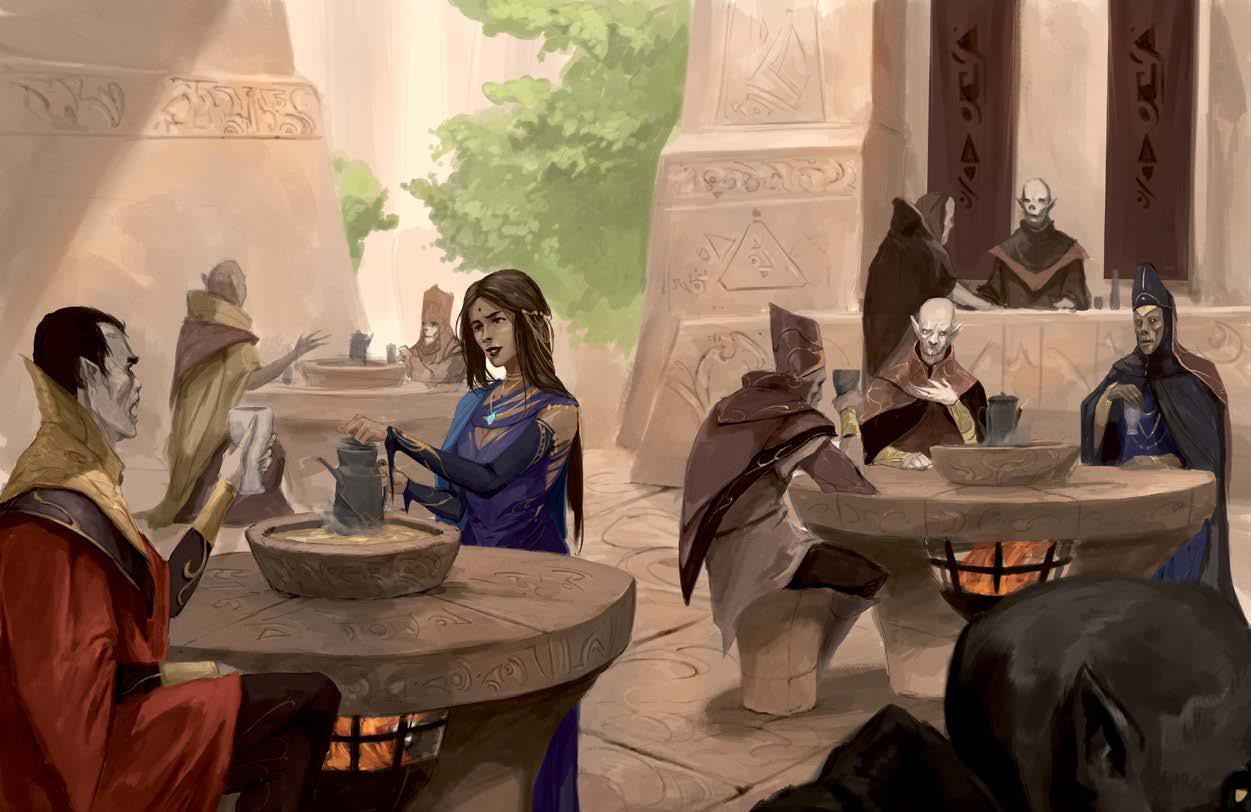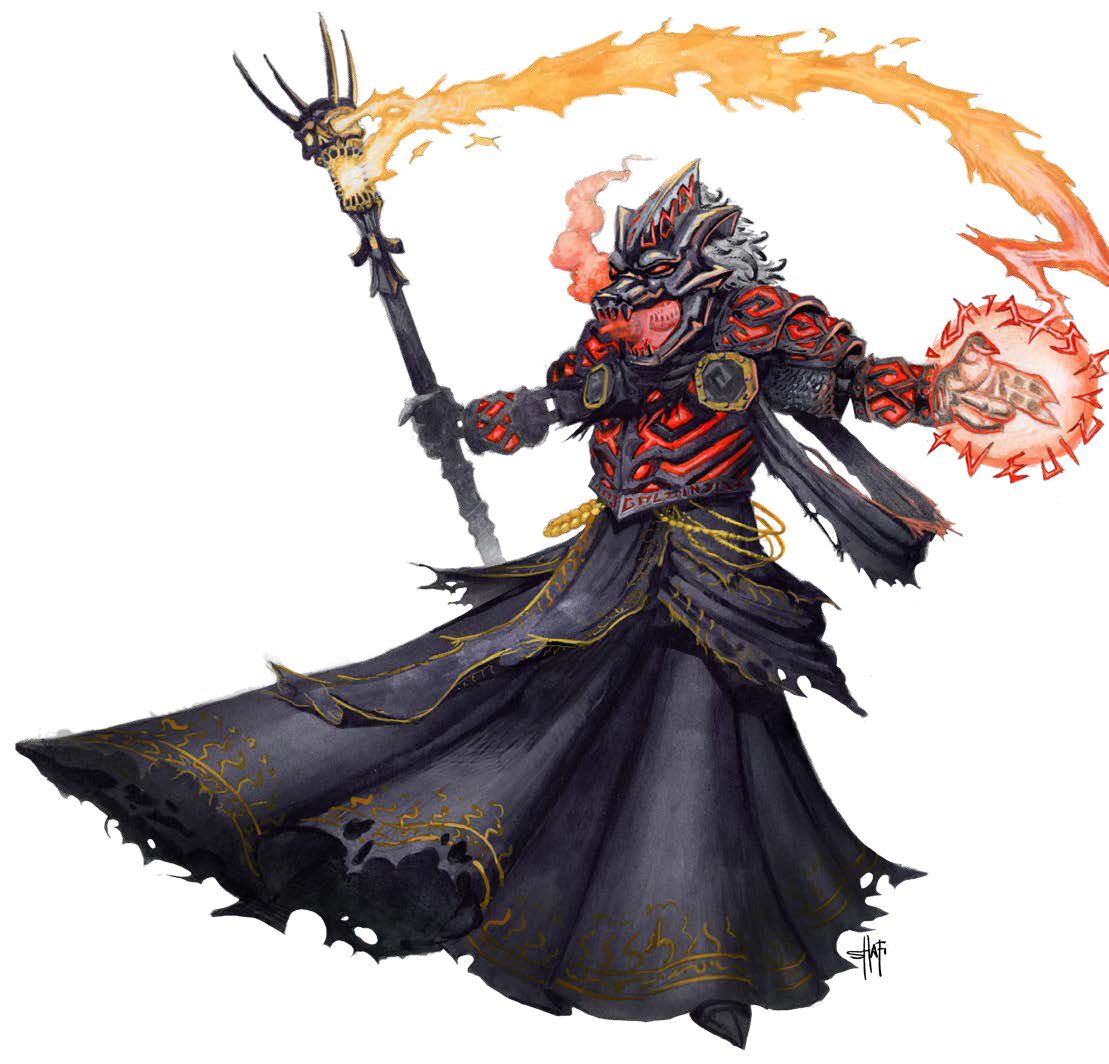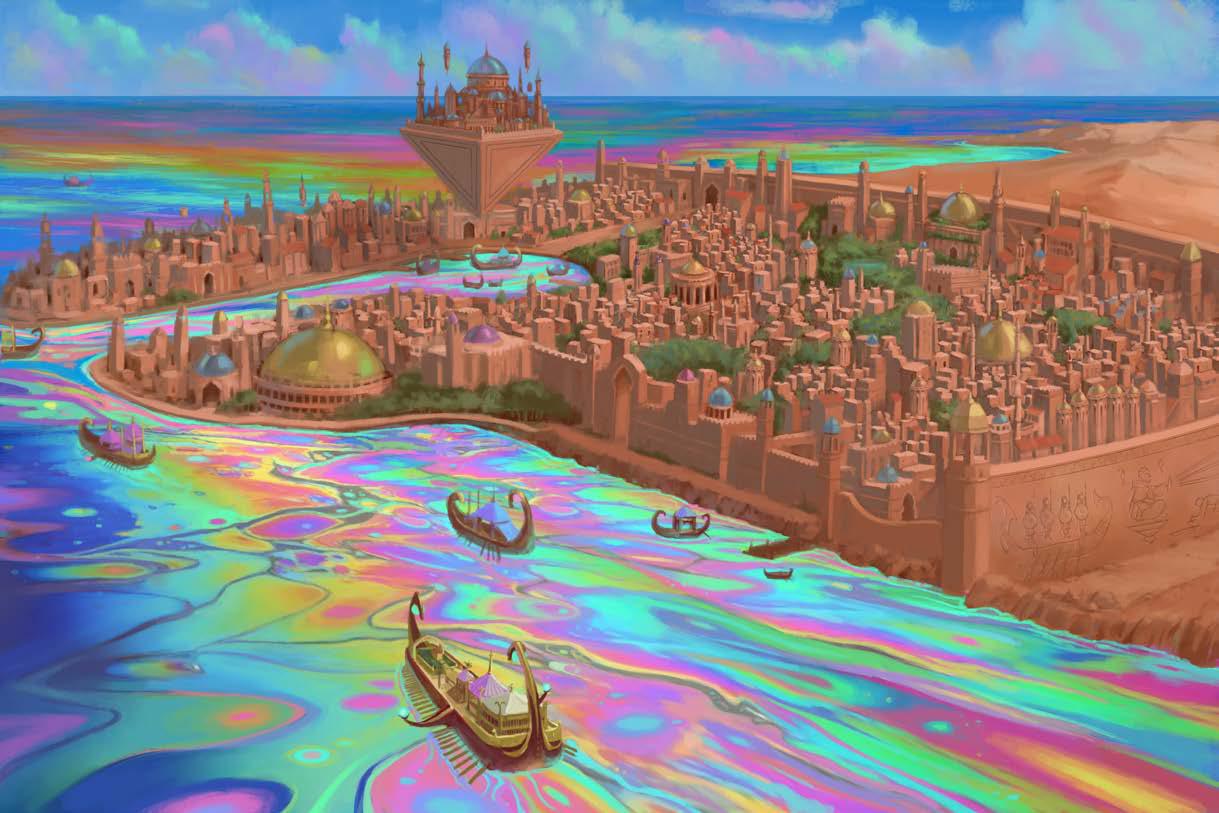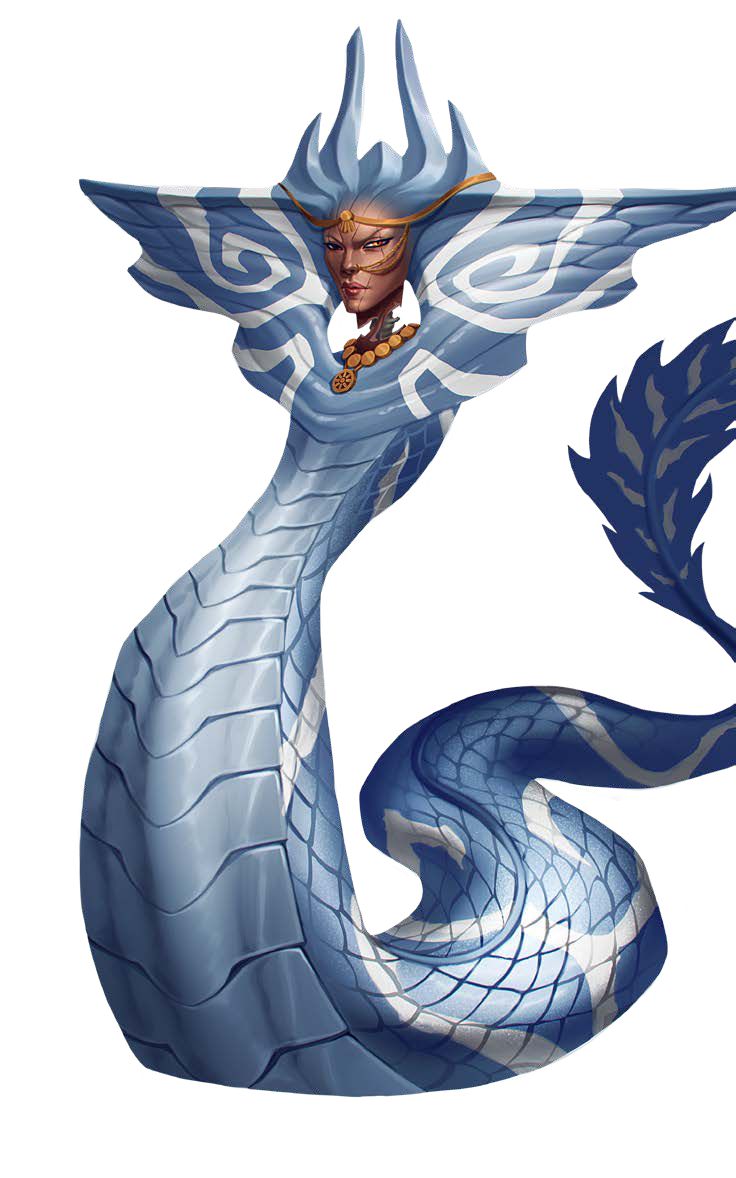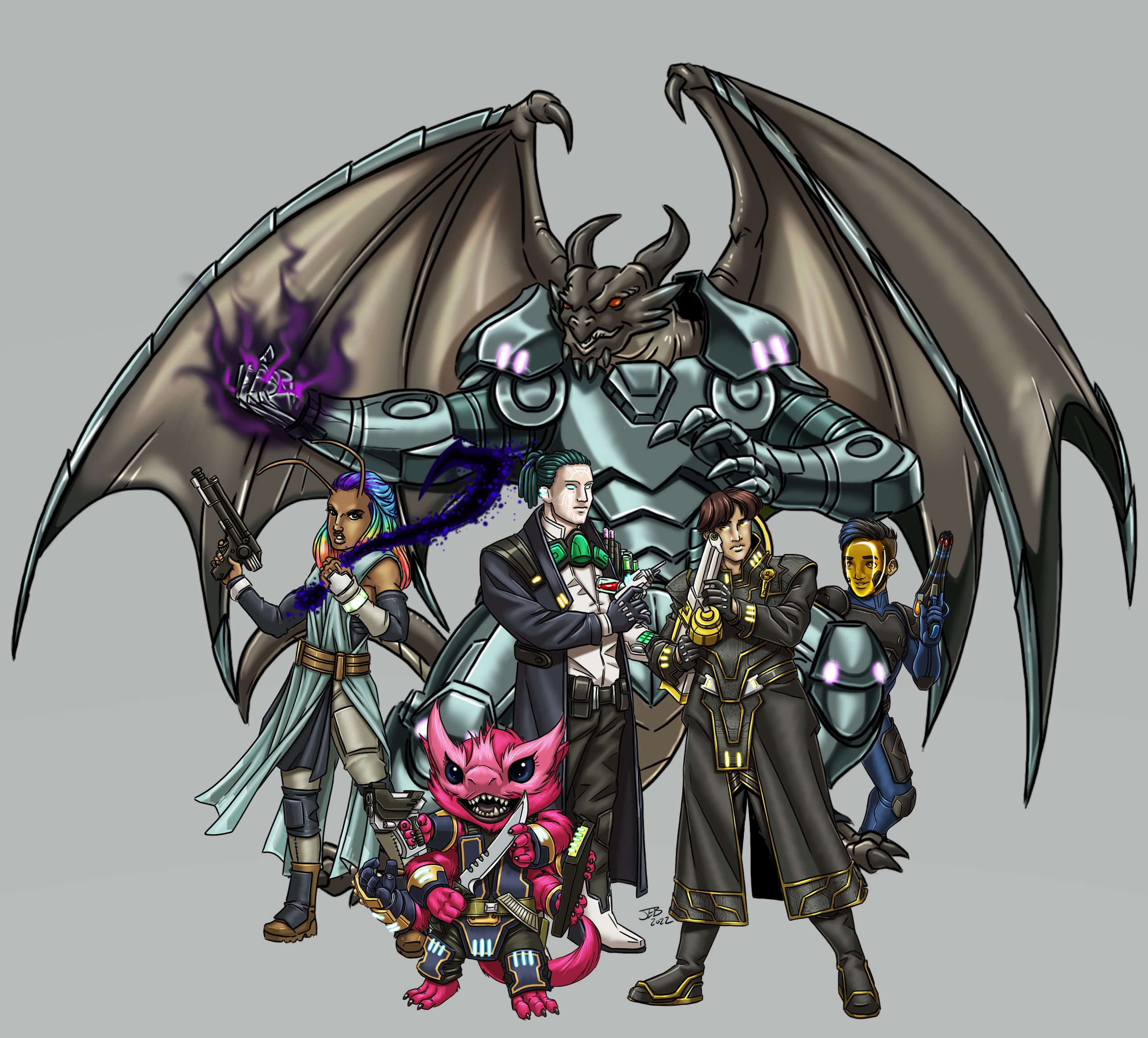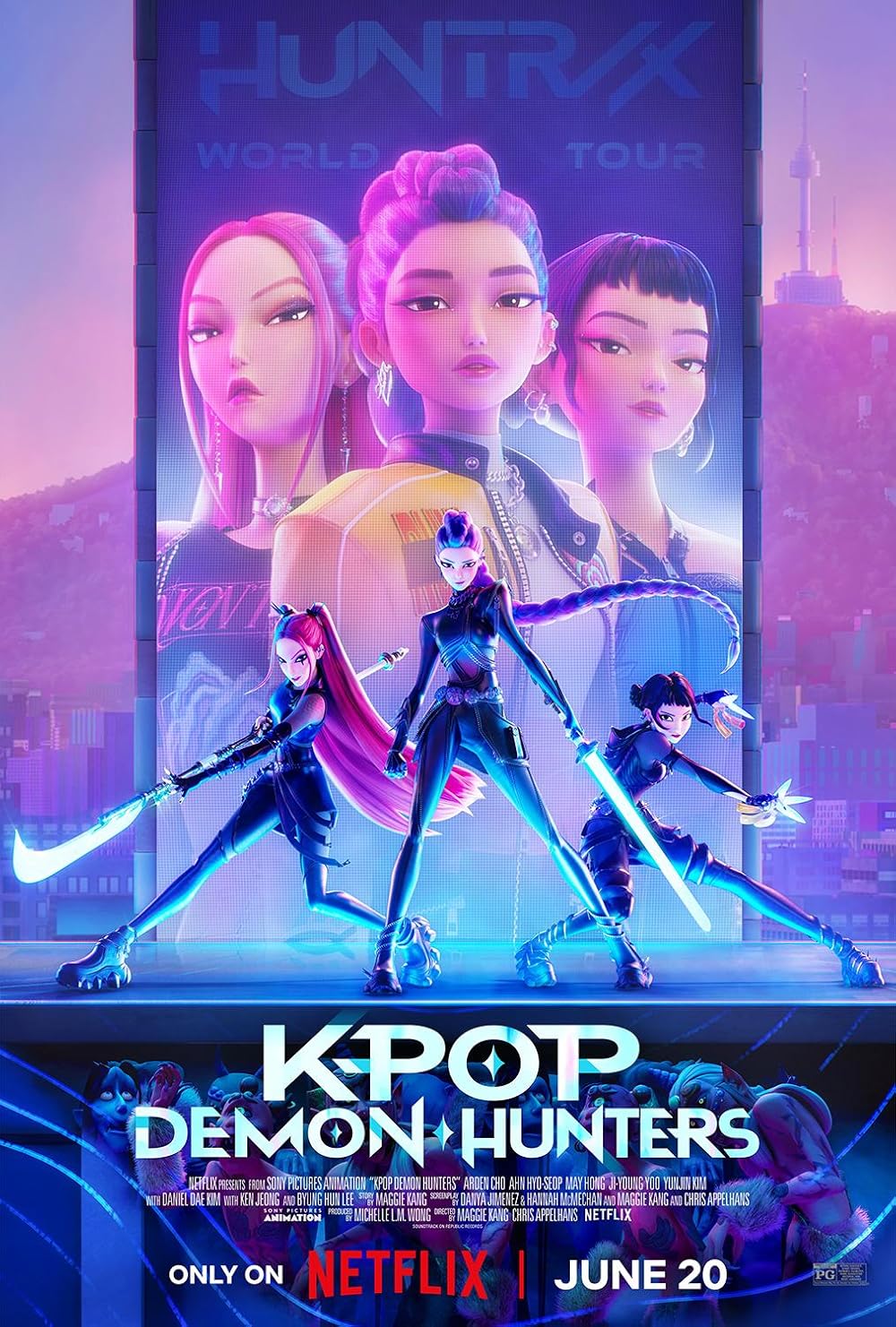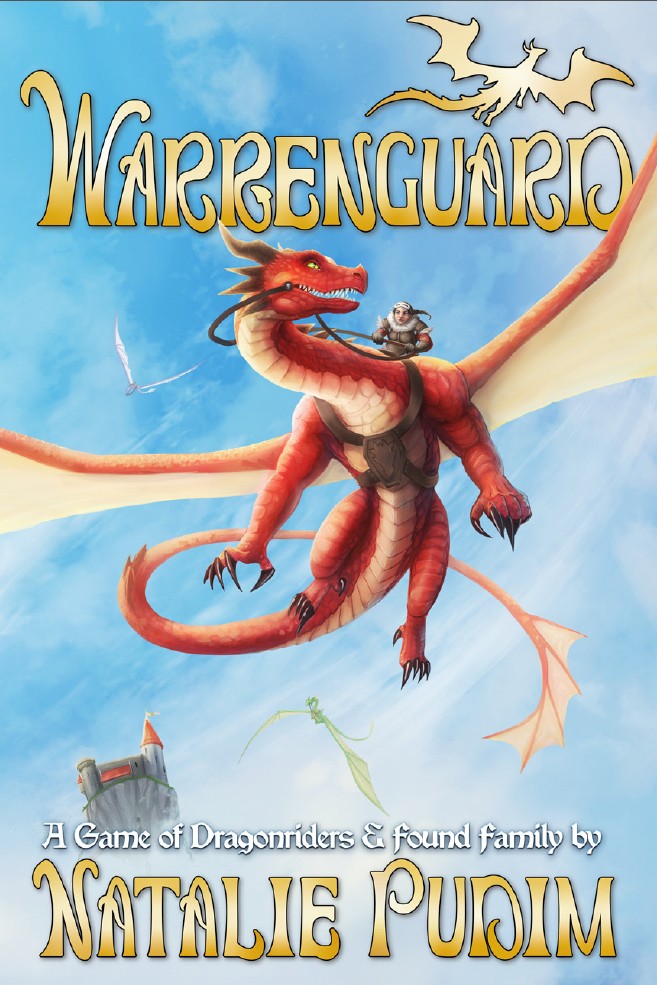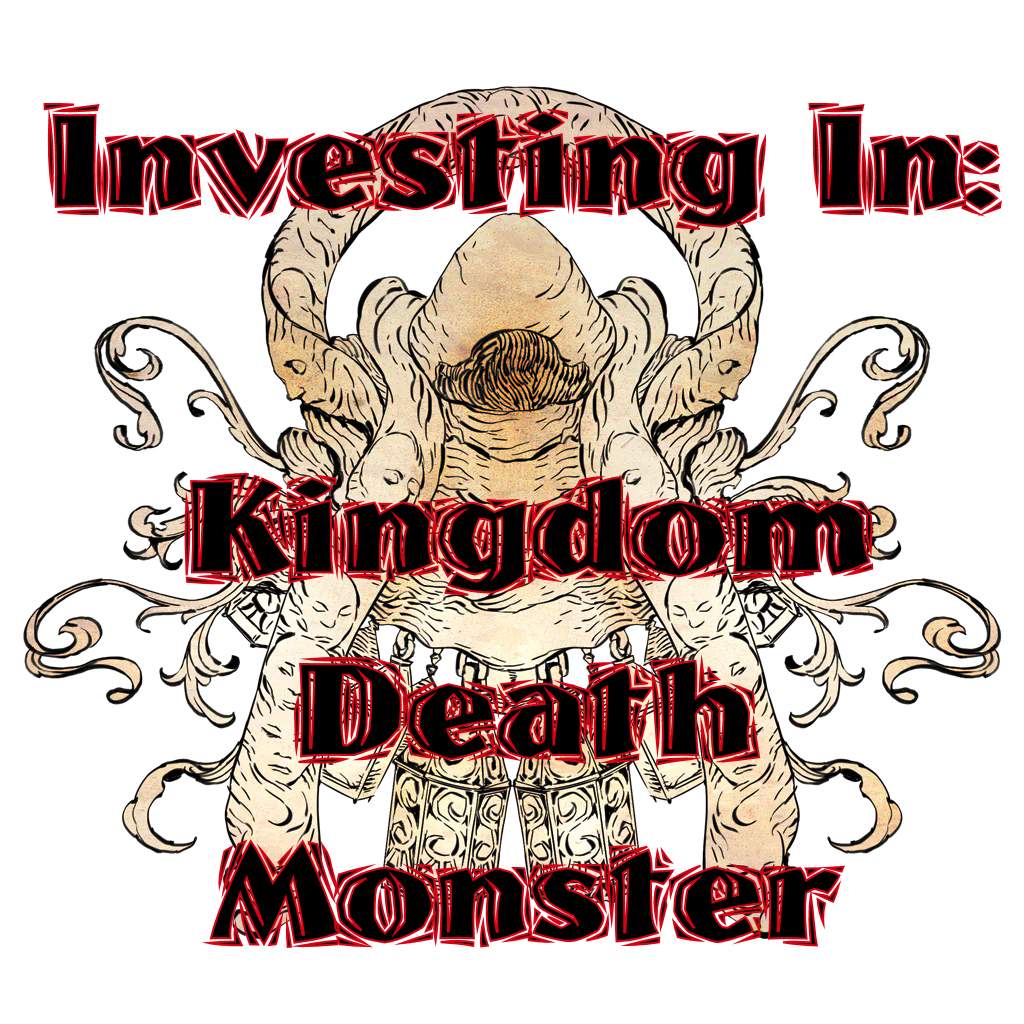“There’s a land where the dead toil in the fields…”
“There’s a land where wizards build things of steel and sinew and spell…”
“There’s a land where one can learn to speak with the moon and the stars…”
“There’s a broken land where magic runs wild and rampant, or else dead and stagnant…”
“There’s a city where artisans make weapons that can kill gods and demons…”
“The Impossible Lands aren’t. But they might seem so to outsiders.”1
The latest of the Lost Omens line is here. Impossible Lands is breathtaking and exhilarating. I’m just grabbing snippets of opening paragraphs to this tremendously inspirational introduction – shout out to Mikhail Rekun and Brian Yaksha – and there’s simply so much more. Impossible Lands gives us haunting Geb, inventive Alkenstar, enchanting Bhopan, the ever-changing Mana Wastes, perfecting Jalmeray, and the amazing feats of Nex. The history of these war-torn lands, forever changed by ambition and hubris, is presented along with the rich cultures of the peoples who dwell here. Here all things of incredible wonder we thought could be are made possible, but in your reading you will certainly also wonder should they be.
I can’t put this book down and neither will you. I love the lore, the narrative, the world-building of Golarion inclusive of Absalom, the Mwangi Expanse, and areas beyond (thank you Travel Guide). The art is breathtaking, evocative and inspirational, and while I’d have marveled at the lore alone we are gifted with varied mechanics to supplement our exemplification of these impossible lands and all those thriving within them. It’s not all beauty and joy, however. I mentioned that wonderful Introduction and within it is a sidebar on Setting Expectations and Checking In with your group. There’s tragedy in the history of these lands and the setting has mature themes that while I suggest we not ignore – discussion is good for our growth – when you’re planning a game this might not be the kind of game your group wants. These nations grew from genocide and greed and worse, creating a dark setting for more mature gaming material. Discuss that X Card as our authors and developers have called out. Talk those lines/veils and then, let your heroes venture forth!
Nearly 13 pages are dedicated to the history of the Impossible Lands with highlights of the war between Geb and Nex as well as sidebars for timelines and further reading for those who simply need more lore! The current Blood Lords adventure path is mentioned for example. I’m really interested to learn more about the Queen of Ebon Feathers. She’s noted as a leader of one of the few kingdoms that persisted in causing a challenge during Osirion’s First Age. It sounds like they couldn’t quite stop her and she might be found in the Mana Wastes. Eternal Queen? Foul magic tied to death? Palace of depravity and debauchery? Well I can’t imagine what sort of divinity might bless such a leader who would wield a golden scythe…
Rich Culture
The People of the Impossible Lands boasts forty-some pages of details on various groups of people and their cultures that collide here due to the history of Geb and Nex’s machinations. Existing ancestries while providing new options for those published before. We get new options for the Fleshwarp and Geniekin from the Ancestry Guide while Tiefling gets some love as well due to a connection with Rakshasas and Asuras. All those mentioned or covered have a nice sidebar directing readers to the books where they were first presented. Thank you editors! Another sidebar reflects on the rarity of ancestries in the Impossible Lands, noting in particular that “almost any PC ancestry or heritage” is possible. As that introduction said, the Impossible Lands aren’t.
We learn of a few new ancestries as well. The Ghoran were born in Nex, created by a renegade druid named Ghorus. You may recall them from 1E’s Inner Sea Bestiary. They’re back and ready for you to explore a plant-like life that re-germinates every 20 years or so into a new person. Their numbers are shrinking, not growing even after finding citizenship in Nex. I hope to see a Ghoran and Leshy meet in a game one day. The preternatural primal abilities and ancestry feats that support such like Flower Magic to cast barkskin and tree shape make sense. I really like the 13th level Look But Don’t Touch. Get permission and consent folks. Else you’ll take 3d6 poison damage and you deserve it. The Kashrishi on the other have been mentioned before but I’ve not seen ancestry rules for them. They’re naturally psychic with influence over their own physical forms and an inborn empathic sense. The heritages reflect the physical like Athamasi who have secondary arms or the Xyloshi who can use their facial horn (which reacts to occult magic with a glow) as a weapon. Natives of Jalmeray, they seem a great option for a psychic with a good heart or someone wishing to play a hero without a predilection for a particular religion.
The last three all had their place in Pathfinder before 2nd Edition and certainly in Golarion. The Nagaji are truly born of an idea by the goddess Nalinivati as they are both human and naga like. I’m concerned some might get thought to be Lamia’s (see the Sacred Nagaji above) but there might also be some concerns of Rakshasas. They’re naturally strong with PCs getting a free boost to Strength with dangerous fangs and ancestry feats that support venomous strikes, coiled slams, or even influencing other snakes. The Vanara on the other hand were created by the monkey god Ragdya, who reminds me of Hanuman. These people are balancing improving and expressing themselves with a historical purpose of valor and bravery. History did divide them, evident in heritages tied to servitude to dark entities and Rakshasas or struggling to spread the message of their created Ragdya. I like that the ancestry feats build on the use of the tail (Tail Snatch) or some of the symbolic power of the Vanara. Ragdya’s Dance let’s you mirthfully switch places with your attacker while the 17th level Unfettering Prankster lets you cast unfettered pack once a day by committing some grand divine prank!
The Vishkanya are a Rare option, survivors with potent venom and ancestry feats to make it increasingly so. I remember being fascinated with their lore when they first appeared in 1E materials. It’s not exactly clear what their history is as they’re certainly not Nagaji. There’s a theory Ravithra – mother to Nalinivati – created them but that’s a theory. Later in the Religion chapter we do have details on Ravithra but not Nalinivati. If interested in exploring that history, do some reading over at the Pathfinder wiki. Much is tied to their venom as a I mentioned, but they have a strong passion for artistic and creative expression. I’m glad they’ve some ways to express that, like the Vishkanya Lore feat granting proficiency in Performance and Stealth or the 9th level Alluring Performance to achieve something truly fascinating. Creating this book was certainly a work that’s proven truly fascinating.
We’ll dig deeper into the lore next time, but I wanted to highlight the geography explored since it is the Impossible Lands after all. Each covered area (Alkenstar, Bhopan, Geb, Jalmeray, the Mana Wastes, and Nex) gives us the Nation breakdown we’ve seen in other works like the Mwangi Expanse including a crest, typical ancestries found for the Peoples, relevant Factions and Languages, as well as Religions and Resources you’ll find adjoining a map of the region. A very useful summary of the past and present with a highlight of notable NPCs before moving into relevant geography. Important locations, like major cities, are detailed and we get settlement info accordingly. I like the “A Day in…” sections so we get a glimpse of what life is like for the peoples in those areas. It can be vastly different for those in Geb versus the Mana Wastes for example. Each chapter also ends with an “Adventuring in…” section with mechanics to support our NPCs and PCs.
Inventive Alkenstar
Alkenstar gives us both the city of the name and the Citadel of the Skyflame, Dongun Hold. It’s certainly interesting to see the prevalence of masks in this art, now evoking thoughts of what people will think of the art of our time. I do appreciate art imitating life to a degree. It gives another hint as to what we might expect in those areas when our characters visit, but also how we might frame up a PC we play from that area. If you’re doing a campaign in a very focused region, it’s even more important. The art will always tell a story, and when I first get my PDF much of it caught my eye. The Way of Triggerbrand certainly did so, providing that new Way for Gunslingers. I like Spring the Trap for the Initial Deed, allowing you to switch between melee or ranged and you might even get a ranged shot off without triggering any reactions. The Shieldmarshal is an uncommon archetype that’s included that combine elements of clockwork – at least so far as the lore of the feats – but what they really do is give you specialized options for defense, vigilance, or attack. The Consolidated Overlay Panopticon grants you a bonus to Perception, low-light vision, and darkvision! It may only be for a minute once every hour, but that is a number of useful bonuses to have with but a single action. We get some new equipment like Alkenstar Ice Wine, a plated duster, and a pocket watch too.
Enchanting Bhopan
The story of Bhopan as a mythical place of fey design excites me. I can’t recall ever seeing detail of it before. The art evokes fairy tales and fables with anthropomorphic teachers. I’ve a friend who is interested in one day doing an Impossible Lands campaign and I hope we get to visit this island. I’ll have to feign ignorance of the Dance Unending and some of the fey dangers… There are dance feats – drawn from the idea of the complex ballroom dances of Bhopan – could be great for any bard or swashbuckler with talented feet. However, it’s the Fey ancestry feats that grabbed my attention. It might be all the work I’m doing for my Kingmaker game, but I’ve always adored Fey in stories or utilizing fey magic in games. Fey Influence let’s you take on fey-like traits. Any ancestry could take it or the others presented like Drain Emotion, Fey Ascension, Glamour, or the 17th level Fey Transcendence. I do love that feats like this or those for Undead are giving us archetypes for ancestry beyond what heritages might do. There are also feats for the Greenwatch, a sort of elite group of scouts that protect Bhopan. They’re tied more to challenging fey dangers. Again, might be useful if you’ve got Unseelie troubles!
Haunting Geb
Geb is breathtaking in its darkness, though not to be confused with Nidal of course. FYI, I’m really excited for a book about Nidal one day… I’ve used the idea of the land of Undead in numerous campaigns and we’ve seen such too. I’ve thought of Karnath in Eberron before. Basically, undead to help your war and that’s what Geb did. A large section details Mechitar the capital and we get a lot of beautiful NPC art. I’m trying to think what the ornate headdresses and the like remind me of, but in short it’s exciting to see some similar styles as we saw in the Book of the Dead since Geb influences much undeath in Golarion. I wonder if he’s active now because of the Whispering Tyrant? We get new curses first presented in the Gamemastery Guide. The new Spell Catalysts are very much in line with Geb born of Bottled Screams (to aid Seal Fate casting) or Unsullied Blood to help your Vampiric Touch. The magic items do include a Tyrant’s Writs though it’s not clear if that Tyrant is Tar-Baphon, Geb, or someone like Urgathoa. I like how it gives you options for the undead your necromancer animates like giving them Bloody for fast healing or Rotten to inflict poison damage on those who start near your undead.
Perfecting Jalmeray
In Jalmeray things brighten back up and that sprawling banner for the beginning of the chapter is beautiful. We see the detail of those seeking perfection but also the struggles of those who’ve endured, journeyed, or come to live here. It’d be easy to create less colorful works, but the art here really helps evoke and inspire as to the culture of these People and their homes. I’m willing to try the recipes they include too like Borhani, which is a real beverage from Bangladesh though typically made with green chili rather than red. Here’s our reminder to discuss the real influences that inspire the authors, developers, and artists who are often sharing their real-world experiences and lives with us. It isn’t just a game, and art is imitating their lives. Celebrate it, and thank them for it. Jalmeray gives us a Ceru familiar option – a tiny blue elephant with influences over fate to jinx a target. We get new melee and ranged weapons including the dual-bladed visap. We get further feat options for the Student of Perfection archetype, five specifically while new spells are noted to support focus options based on your ki. The Jalmeri Heavenseeker is brand new and you can even blend it with Student of Perfection as noted in its details; you don’t have to have taken three feats before starting into this archetype. These are practices tied to the sky and I feel if I were to utilize them I would want to learn a bit more about the real world inspiration for them. The Sky and Heaven Stance let’s you do 1d10 slashing damage, which for 6th level is good. You get resistance to electricity and sonic as well. Could be very useful in the right situation.
The Ever-Changing Mana Wastes
I very much want to explore the Mana Wastes because it represents both dead and wild magic. Here some are struggling to survive and endure after two wizards basically made it their battleground, impacting many in their hubris. Mage wars never end well in any campaign setting. This former necromancer-general lich Alemayheu (see above) sure looks dangerous but also like a perfect villain to have your group come upon. I mean, wizard gangs? Sounds like great gaming to me. I’d have spell duel rules ready! We don’t get specific adventuring rules for the Mana Wastes but it’s more woven in as it’s such a dangerous place like the rules for Wellspring Surges in the area caused by wild magic. The new magic item Condensed Mana is bottled miasma from the Wastes. It’s a surge in a bottle and dangerous, but some like it that way. That kind of chance is what you’re taking exploring the Mana Wastes.
Amazing Nex
Last of the countries covered is Nex where magic has built anything and everything. Here we see truly just because we could, doesn’t mean we should. Gorgeous floating towers and a land rich with magic is tainted with flesh forges and the corruption of arrogance. The salons talking philosophy and magical theory are marred by those turning blind eyes to abuse of magic and those who might seek to master it. Even Abraxus – demon lord of forbidden magic – is mentioned as being openly followed amongst some and the murderous rituals are just “frowned upon.” I can’t deny the art is stunning and provocative, but there’s a story there and again, I hope to explore it. We learn about the Cubes of Nex that focused on various schools of magic. Gee, arrogant wizards focusing on schools of magic? Where have I heard that before? The runelords are back and if any visit, hopefully they’ll warn Nex that while magic can be wondrously alluring, it’s also corruptive and well, polluting like the Miasmere below.
There’s an artifact called the Cube of Nex you might’ve heard about, suppressing magic around it except for the magic you cast. It is vastly dangerous. Abraxan Tattoos are apparently all the rage since that demonic cult is allowed to exist here. The tattoos are interesting for PCs, possibly allowing spellcaster PCs or just any with interest to find some varied benefits like the Thoughtwhip Claw because Abraxus teaches you can rob minds and pockets. You get a +2 bonus to Thievery as well as the ability to cast Mind Probe once a day. There’s new grenades focused on oozes and other related variant alchemy, like the Oxygen Ooze you can chew on to breathe in an environment you normally couldn’t. We get two new spells as it’s noted characters from Nex often summon servitors and have access to uncommon spells like Summon Healing Servitor. But the 9th level Summon Ancient Fleshforged is still a secret. Considering the devastating options of choosing a gargantuan creature like the Bone Breaker or the terrifying Thousand that will inflict frightened on nearly anyone around it up to frightened 4 on a critical failure. The thorn-caller image is terrific because it’s terrifying. Think of that as Gargantuan size!
Cause Ya Gotta Have…
Faith. As we turn to Religion a number of new gods are detailed with the typical areas of concern, divine ability, edicts, anathema, favored weapon, etc. Some we’ve seen or at least heard of before like Arazni due to her time within Geb. Those brought up previously like Ragdya and Ravithra (see below) are presented but we have a write up too of other gods like Nethys, Pharasma, but also Brigh the clockwork goddess. New art of Urgathoa is presented as well as that of Shelyn. Do we know from where Urgathoa came before she defied Pharasma in the Boneyard? I wonder if she dwelt within the Impossible Lands. It was first noted she was a Varisian goddess so perhaps there, if she was a mortal anyway. It’s a shame that it’s discussed how nobility in Jalmeray look down upon the worship of Shelyn. Poetry and love aren’t merely the concern of youth.
The Bestiary
Finally we have our Bestiary with more undead like the gargantuan Benthic Reaver that roams the waters between Nex and Geb and the creations of Alkenstar and Nex like the Gunpowder Ooze or Quantium Golem. The Spellscar Fext is likely to be a roaming danger of the Mana Wastes. These are the spellcasters who fell to the wild magic of the wastes. As a level 7 creature they can be a challenge for a lower level party or a pack can be used for those parties of greater capability. It can counterattack spells affecting its targets, which a useful trick as it strips away protections and buffs. More importantly I like the Unstable Feedback. If the Fext saves against a spell cast upon it, a wellspring surge happens against the caster. It’s a reaction for the Fext to use so it won’t be constant, but even one surge a round is harrowing.
Certainly there is more to come for the Impossible Lands and lands even farther afield. Next time we’ll dig into the lore, highlighting story information from the various country and Religion chapters. I want more books like this one. I’m hoping for a treatment on Arcadia for example. Considering the recently promoted Creative Director is the wondrous Luis Loza, I know the Lost Omens line will have even more wondrous stories to read, cultures to learn of, and places for us to explore. Until then, invest in Impossible Lands and you’ll find yourself both exhilarated and terrified by all that is possible!
Investing In:
I wasn’t quite sure what to name my article series when I first started but the idea of showcasing or discussing things that make me excited, that I find new and interesting, or maybe I’m otherwise passionate about seemed to fit with the idea of Investing In something like the Pathfinder 2E mechanic. To use some magic items you have to give that little bit of yourself, which helps make these things even better. I like the metaphor of the community growing and being strengthened in the same way!
I also want to hear what you’re Investing In! Leave me a comment below about what games, modules, systems, products, people, live streams, etc you enjoy! You can also hit me up on social media as silentinfinity. I want to hear what excites you and what you’re passionate about. There’s so much wonderful content, people, groups (I could go on) in this community of ours that the more we invest in and share, the better it becomes!
Sources
Banner – Pathfinder Lost Omens: Impossible Lands cover, Paizo
- Introduction excerpt, Pathfinder Lost Omens: Impossible Lands, Paizo
- Introduction banner, Pathfinder Lost Omens: Impossible Lands, Paizo
- Queen of Ebon Feathers, History chapter, Pathfinder Lost Omens: Impossible Lands, Paizo
- Sacred Nagaji, People chapter, Pathfinder Lost Omens: Impossible Lands, Paizo
- Wajaghand Vanara, People chapter, Pathfinder Lost Omens: Impossible Lands, Paizo
- Triggerbrand, Alkenstar chapter, Pathfinder Lost Omens: Impossible Lands, Paizo
- Bhopan court, Bhopan chapter, Pathfinder Lost Omens: Impossible Lands, Paizo
- Geb cafe, Geb chapter, Pathfinder Lost Omens: Impossible Lands, Paizo
- Jalmeray banner, Jalmeray chapter, Pathfinder Lost Omens: Impossible Lands, Paizo
- Alemayehu, Mana Wastes chapter, Pathfinder Lost Omens: Impossible Lands, Paizo
- Miasmere, Nex chapter Pathfinder Lost Omens: Impossible Lands, Paizo
- Thorn-caller, Nex chapter, Pathfinder Lost Omens: Impossible Lands, Paizo
- Ravithra, Religion chapter Pathfinder Lost Omens: Impossible Lands, Paizo
- Spellscar Fext, Bestiary chapter, Pathfinder Lost Omens: Impossible Lands, Paizo

